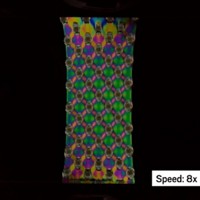Advertisement
Grab your lab coat. Let's get started
Welcome!
Welcome!
Create an account below to get 6 C&EN articles per month, receive newsletters and more - all free.
It seems this is your first time logging in online. Please enter the following information to continue.
As an ACS member you automatically get access to this site. All we need is few more details to create your reading experience.
Not you? Sign in with a different account.
Not you? Sign in with a different account.
ERROR 1
ERROR 1
ERROR 2
ERROR 2
ERROR 2
ERROR 2
ERROR 2
Password and Confirm password must match.
If you have an ACS member number, please enter it here so we can link this account to your membership. (optional)
ERROR 2
ACS values your privacy. By submitting your information, you are gaining access to C&EN and subscribing to our weekly newsletter. We use the information you provide to make your reading experience better, and we will never sell your data to third party members.

If you’ve ever tried paper folding, perhaps you’ve run into a common challenge: the smaller the project, the harder it is to achieve a sharp fold. This was no issue for researchers at Seoul National University, who reported in Nature the development of a DNA origami system that can, like regular origami, be folded into a panoply of shapes (2023, DOI: 10.1038/s41586-023-06181-7).
First, the researchers synthesized the origami “paper,” a self-assembling DNA scaffold about 240 nm to a side, built from four monomeric tiles. Each tile has what the researchers call a handle, two stretches of DNA (pink and orange markings, top) on either side of a desired crease (dashed line). Next they added a glue molecule that can bind by base-pairing to both halves of the handle, bringing them together and forcing the scaffold molecule to crease into a new configuration. This series of atomic force micrographs (bottom) show how, by combining monomers with different handles, the researchers can generate origami papers that can fold into many different shapes.
The researchers also developed a way to unfold their origami: a releaser DNA sequence, which pairs with the glue DNA more strongly than the scaffold does, could restore the scaffold to its unfolded starting state.
Credit: Nature
Do science. Take pictures. Win money. Enter our photo contest here.





Join the conversation
Contact the reporter
Submit a Letter to the Editor for publication
Engage with us on Twitter